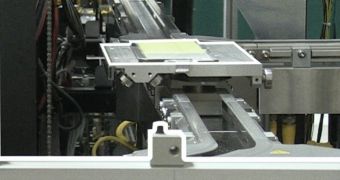3D printing technology would have probably become faster on its lonesome but, as is often the case, it got a kick in the backside last week, when Google persuaded 3D systems to get a move on.
You see, Google is preparing a modular device that could be called a smartphone, a tablet, a gadget, etc. It depends on how many pieces you put together, we guess. Or will put together, since the thing isn't on the market yet.
Indeed, Google will not have it ready for commercialization until next year, 2015. On the flip side, in the grand scheme of things, the time between now and then isn't so long.
It would definitely not be enough to set up a whole factory or two with different assembly lines for each “module” that will make up the Ara.
Indeed, the whole point of Ara is that Google will be able to bring out new components, gradually increasing the combinations available until the Ara is for (mobile) gadgets what LEGO is for toys.
In a way, it will be along the lines of the Kano Kit that got previewed the other day. You know, the PC assembly kit that will let kids build their own system.
Google figured that 3D printing would solve the problem of custom packaging, at the very least, so it tapped 3D Systems for a partnership.
The only problem was that, with how slow 3D printing technology still is, the company would have trouble meeting its manufacturing goals. That means that 3D Systems had to get creative and come up with a method of 3D printing that goes faster.
Much faster, as it turned out. Fifty times faster 3D printing. Word came out last week about it, but there was hardly any information on how the new technique/printer worked.
Now, though, that info is no longer under wraps. 3D Systems has, indeed, invented a new 3D printer, which will be set up like an assembly line, instead of a box.
A typical 3D printer creates an object layer by layer by moving a print head over a print bed again and again. The assembly line-like 3D Systems printer has several print beds that move through various stationary points, like a car on a racetrack. When the object is completed, the print bed is removed from the racetrack and replaced by another.
At the end of the process, we'll have an item made from one or more materials/colors. And due to the approach, it will be possible to create millions or even billions of Google Project Ara phone modules per year.
The key is the jetting technology that prints 4 billion drops a minute (with micron accuracy) and produces two liters of plastic resin every three minutes.
So, basically, 3D Systems has created a 3D printing technology that prints things 50 times faster than usual with better accuracy than any printer today. Sounds like a real wonder. Definitely something to root for.

 14 DAY TRIAL //
14 DAY TRIAL // 